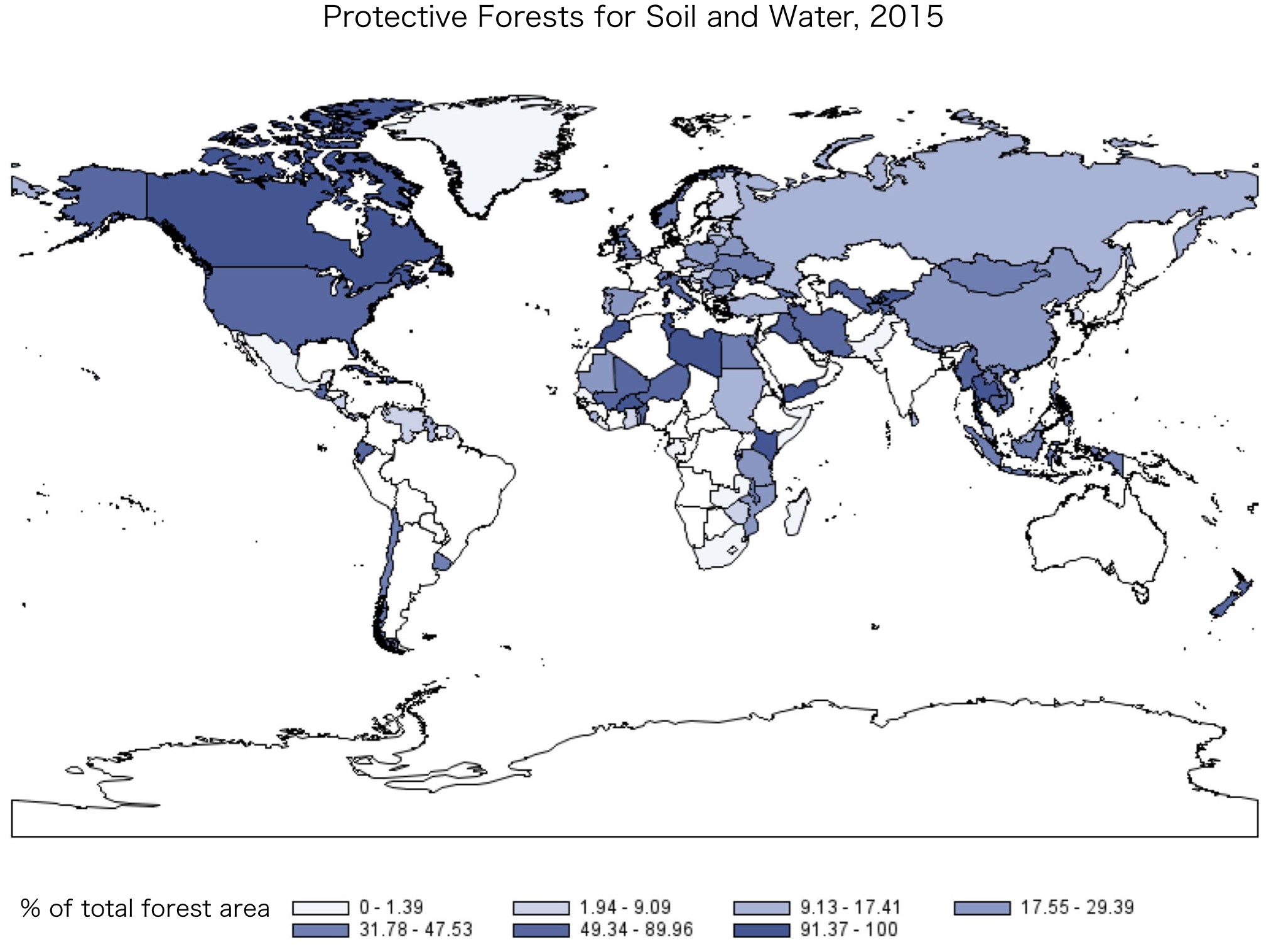Growing global awareness of forest functions and services Revealed from analysis of GFRA 2015


Global distribution of protective forests for soil and water resources as % of total forest area in 2015
The distribution of number of countries reporting protective forests for conservation of soil and water resources was divided into U-shaped double peaks at 0 and 100%. This suggests a socio-economic influence on the designation of protective areas.
© 2015 Elsevier B.V. CC BY-NC-ND
An international research team led by the University of Tokyo has revealed that the quarter-century trend of an increasing number of countries reporting the protective functions and ecosystem services continues, based on analysis of the Global Forest Resources Assessment (GFRA2015) data released by the United Nations Food and Agriculture Organization (FAO) in September 2015. This result suggests a recent growing social interest in the multiple functions of the forest.
The FAO started to issue GFRA reports every five to ten years in 1948 to evaluate the world's forest resources, and initially focused on wood biomass. Since the 1970s, the FAO has widened its assessments to include multiple forest functions.
Thirteen groups from across the world participated to analyze the GFRA2015 data. One of the groups revealed a 3% decrease in global forest area from 4,128 million hectares in 1990 to 3,999 million hectares in 2015. While the trend in decreasing forest cover continues, the annual rate of net forest loss halved during 2010 to 2015 from levels in the 1990s. Project Associate Professor Satoru Miura and his colleagues revealed that the 0.821 billion hectares of global forest managed for the protection of soil and water in 1990 has increased to 1.002 billion hectares, and 0.916 billion hectares for ecosystem services has increased to 1.018 billion hectares, which is 25.1% and 25.4% respectively of all global forested areas. The steady increase in reporting countries for both variables contributes to this increase of the protective forest area. This is indicative of an escalation in public interest in the multiple functions of forests.
"Forest covers only 29% of the Earth's total land area, or 8% of the global surface. However, it provides a basis for many peoples' livelihoods and plays an invaluable role in mitigation of the threats posed by climate change. The joint scientific analyses covering the entire FRA 2015 data are extremely important for the field of forest and forestry research," says Project Associate Professor Miura. He continues, "The introduction and the 13 papers, including this one, represent an important contribution and unique data set on forests and forestry that can serve all scientists, forest managers, NPOs, and policy makers whose interests lie in global environmental issues."
This research was published as a special feature in the journal Forest Ecology and Management with the results of 13 other thematic groups.
Press release (Japanese)
Paper
, "Protective functions and ecosystem services of global forests in the past quarter-century", Forest Ecology and Management 352, 35-46, doi: 10.1016/j.foreco.2015.03.039.
Article link (Publication)
Links
Graduate School of Agricultural and Life Sciences
Radioisotope Center, Graduate School of Agricultural and Life Sciences







